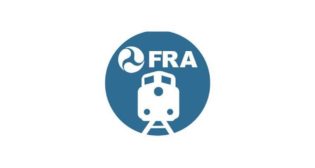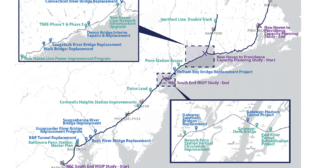
STB seeks PRIIA Section 213 revisions
Written by William C. Vantuono, Editor-in-ChiefThe U.S. Surface Transportation Board on Dec. 28, 2015 issued two interrelated decisions—a Notice of Proposed Rulemaking (NPRM) and Proposed Policy Statement (PPS)—proposing revised definitions and policy guidance for passenger train on-time performance and preference. The STB is seeking public comment on the proposals, both of which would affect Section 213 of the Passenger Rail Investment and Improvement Act of 2008 (PRIIA) as codified at 49 U.S.C. § 24308(f).
The NPRM (STB Docket No. EP 726) covers “defining on-time performance for purposes of cases brought before the Board” under PRIIA Section 213 – 49 U.S.C. § 24308(f). Currently, under § 24308(f), if the on-time performance of an intercity passenger train averages less than 80% for any two consecutive calendar quarters, the Board may initiate an investigation, or Amtrak and other eligible complainants may file a complaint with the Board requesting that the Board initiate an investigation. The proposed revised definition would consider a train to be on time if it arrives at its final destination no more than five minutes after its scheduled arrival time for each 100 miles the train operated, or no more than 30 minutes after its scheduled arrival time, whichever is less.
The PPS (STB Docket No. EP 728) “addresses issues that may arise and the evidence to be presented in complaint proceedings under § 24308(f).” It interprets the statutory preference accorded to Amtrak trains over freight trains, codified at 49 U.S.C. § 24308(c), and the phrase “attributable to a … failure to provide preference,” codified at 49 U.S.C. § 24308(f)(2), and “provides guidance regarding the evidence that may be most useful in § 24308(f) proceedings.”
“Amtrak has filed two complaints (both pending) requesting that the STB initiate an investigation pursuant to § 24308(f), claiming that host Class I carriers have not given Amtrak preference as required under § 24308(c). Because ‘preference’ is not defined by statute, we include guidance here regarding the Board’s interpretation of ‘preference,’” the STB states. “In addition, because there is no precedent for parties to look to in developing their cases, we will also provide guidance regarding the evidence that may be most useful in § 24308(f) proceedings. We note that through this policy statement, the Board is not making any binding determinations. Parties are still free to present any arguments or evidence they could have presented before the Board issued this policy statement. We provide this preliminary guidance merely as a potential starting point for parties to consider when developing evidence for § 24308(f) proceedings, recognizing that the fact-specific nature of § 24308(c) preference issues means that the Board’s approach to such issues will likely be refined in individual § 24308(f) proceedings.
STB Docket No. EP 728 states, in part: “Amtrak was established by Congress in 1970 to preserve passenger services and routes on the nation’s railroads. . . . As a condition of relieving railroad companies of their common carrier obligation to provide passenger service, Congress required that they permit Amtrak to operate over their tracks and use their facilities. . . . Since 1973, Congress has required host railroads to give Amtrak trains preference over freight trains when using rail lines and facilities. At the time, authority to enforce this preference requirement resided with the Secretary of Transportation. The law requires that ‘[e]xcept in an emergency, intercity and commuter rail passenger transportation provided by or for Amtrak has preference over freight transportation in using a rail line, junction, or crossing . . . .’ However, ‘preference” is not defined by statute.”
Most railroad industry observers and historians are quick to point out that Amtrak was not created to preserve passenger rail services, but to help preserve freight railroads, many of which (particularly in the Northeast) were struggling at the time to survive in a business climate constrained by stifling regulation, a common-carrier obligation to provide unprofitable passenger servicesm and that favored competitive modes (trucking and airlines) benefitting from government-subsidized infrastructure. “Amtrak was created to relieve the freight railroads of the continued burden of deficit passenger operations and ‘to revitalize rail transportation service in the expectation that the rendering of such service along certain corridors can be made a profitable commercial undertaking. . . . (House Report No. 91-1580, reprinted in 1970 U.S. Code Cong. & Admin. News 4735, 4737, 4741),” notes Railway Age Capitol Hill Contributing Editor Frank Wilner. “In creating Amtrak, Congress sought to establish a single, for-profit corporate entity that, with initial Federal assistance, and with infrastructure, financial and other contributions from the freight railroads, would be responsible for providing all intercity rail passenger service over a unified national system.”
Comments on the NPRM are due Feb. 8, 2016, with reply comments due by February 29, 2016. Comments on the PPS are due Feb. 22, 2016, with reply comments due March 14, 2016.



